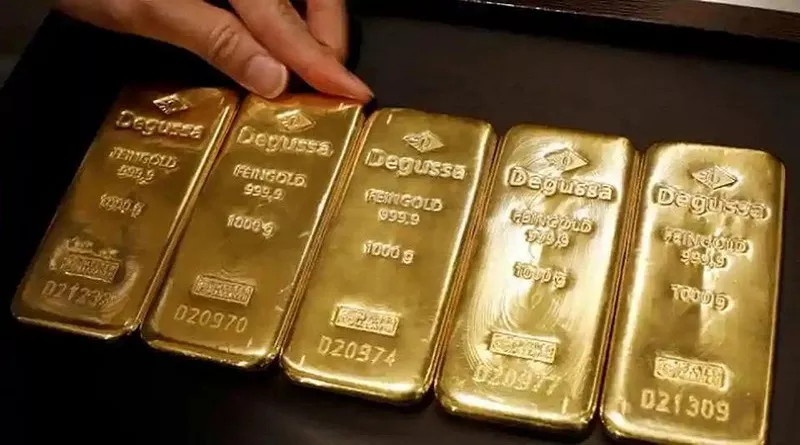Embarking on a Historical Odyssey:
The journey through the annals of gold spot price history is akin to unraveling the threads of time, with each glinting moment encapsulating the intricate interplay of economic forces, geopolitical events, and investor sentiment. In this comprehensive overview, we delve into the last decade, tracing the trajectory of the gold spot price and deciphering the narratives that have sculpted its path.
1. The Opening Act: 2013-2015
Post-Financial Crisis Landscape:
As the echoes of the 2008 financial crisis reverberated, the early years of the decade witnessed a complex dance of recovery and uncertainty. Gold, having reached unprecedented highs in the aftermath of the crisis, experienced a correction. The years 2013 to 2015 saw a gradual decline in the gold spot price as the global economy sought stability amidst shifting tides.
Taper Tantrum and Market Reactions:
The specter of the Federal Reserve’s tapering discussions cast a long shadow over gold prices during this period. The so-called “taper tantrum” triggered market reactions, leading to heightened volatility and a reassessment of the role of gold in a changing economic landscape.
2. Mid-Decade Resurgence: 2016-2018
Political Uncertainties and Safe-Haven Appeal:
The mid-decade period ushered in a resurgence in gold prices, fueled in part by political uncertainties on the global stage. Events such as the Brexit referendum and the U.S. presidential election contributed to a renewed safe-haven appeal for gold. Investors, seeking refuge from unpredictable geopolitical landscapes, once again turned to the precious metal.
Dollar Dynamics and Inflationary Pressures:
The delicate dance between the U.S. dollar and gold played a crucial role in shaping prices. A weaker dollar, coupled with inflationary pressures, acted as catalysts for the upward trajectory of gold. During this phase, gold prices regained some of the ground lost earlier in the decade.
3. Consolidation and Turbulence: 2019-2020
Trade Wars and Pandemic Shadows:
The latter part of the decade brought its share of challenges. Trade tensions between economic giants, coupled with the emergence of the COVID-19 pandemic, cast shadows over the global economy. Gold, traditionally viewed as a hedge against economic uncertainties, experienced both consolidation and turbulence during this period.
Record Highs Amidst Economic Uncertainties:
In a twist of fate, gold prices reached record highs in 2020 as the full impact of the pandemic unfolded. Economic uncertainties, coupled with central bank responses and unprecedented fiscal measures, fueled a surge in demand for gold as a perceived safe-haven asset.
4. The Dawn of a New Era: 2021-2022
Vaccine Rollouts and Economic Recovery:
The dawn of the new decade brought with it a sense of optimism as vaccine rollouts commenced and economies embarked on paths to recovery. Gold, often viewed as a barometer of uncertainty, faced headwinds as investors recalibrated their portfolios in response to changing economic conditions.
Volatility and Shifting Sentiments:
The latter part of the period saw increased volatility and shifting sentiments. Factors such as inflationary concerns, interest rate expectations, and the evolving stance of central banks contributed to fluctuations in the gold spot price, reflecting the dynamic nature of global financial markets.
Frequently Asked Questions
Q1: What factors contributed to the decline in gold prices from 2013 to 2015?
Taper Tantrum and Economic Uncertainties: The Federal Reserve’s discussions on tapering its stimulus measures, coupled with broader economic uncertainties, led to a decline in gold prices during this period.
Q2: How did political events impact the resurgence of gold prices in the mid-decade period?
Safe-Haven Appeal: Political events such as the Brexit referendum and the U.S. presidential election increased geopolitical uncertainties, prompting investors to seek the safe-haven appeal of gold.
Q3: What role did the COVID-19 pandemic play in shaping gold prices in 2020?
Record Highs Amidst Uncertainties: The pandemic heightened economic uncertainties, leading to a surge in demand for gold as a perceived safe-haven asset and contributing to record-high prices.
Q4: How did the economic recovery and vaccine rollouts impact gold prices in 2021-2022?
Shifting Sentiments: As economies embarked on paths to recovery with vaccine rollouts, shifting sentiments among investors influenced the gold spot price, reflecting the dynamic nature of global financial markets.
Q5: Is gold still considered a safe-haven asset in the current economic landscape?
Changing Perceptions: While gold retains its historical status as a safe-haven asset, changing economic conditions and evolving investor perceptions contribute to nuanced considerations of its role in modern portfolios.

